Wood blewits – Identification, Distribution, Edibility, Ecology, Sustainable Harvesting
Wood blewit – Clitocybe nuda (previously Lepista nuda)
- Edibility 4/5 – must be cooked – some people react adversely – try just a little, well cooked, first time round. Dry reasonably well. Smaller, firmer specimens are good for pickling
- Identification 4/5 – Smooth, purple cap, browning with age, 5 – 15cm, domed at first, becoming flat and often upturned with age. Bright purple crowded sinuate gills, becoming drabber with age, but always with a blue/lilac hue. Stem bluish/lilac and fibrous. Delightful aromatic, floral scent. Usually appearing in clusters of 4 – 20 mushrooms.
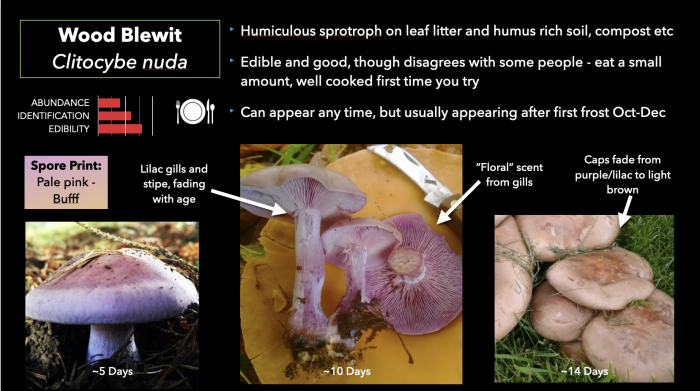
Wood blewits feature in my webinar “20 mushrooms to know before you die”
- Distribution 3/5 – Widely dispersed across the UK, not hard to find in their habitat. Where established they can reappear in the same location for several years, provided their substrate is “topped up”
- Season -Principally October – December usually appearing around first frost, but can occasionally grow at any other time of year.
- Habitat – Wood edges, and road verges, under most tree types, with a liking for thick leaf or needle litter. Compost heaps, and locations where lots of grass cuttings have been piled up over many years are good hunting grounds. Occasionally they can grow from humus-rich soil in grass some distance from trees or leaf litter.
- Ecological role: Saprophytic, rotting down leaf litter and nutrient rich woodland/hedgerow soil. Older caps often play home and nursery to fungal gnat and fly larvae
- Sustainable Harvesting: These are common mushrooms, providing a great source of local, low carbon cost food. Thinning a troop will leave plenty for other creatures to enjoy. As saprophytic fungi tend to deplete finite food resources they must seek out new substrates through their airborne spores, so don’t pick lots of immature caps. By the time they have opened into a full funnel shape, they will already have dropped millions of spores, and the fungi, if it could express a preference, would probably thank you for transporting its spore-producing structures around the forest in an open basket! As leaf rotters, its advisable to harvest by cutting, as pulling will bring large lumps of mycelium and substrate with them. Read more on cutting v picking wild mushrooms here . If you do harvest the stem butts with some mycelium still attached, these can be sandwiched between thin sheets of wet cardboard, kept cool and damp, then introduced to new potential substrates (eg. a compost heap) when the growing mycelium is clearly visible on the cardboard. While such strategies are not guaranteed to be successful, large humicolous saprotrophs such as wood blewits offer much higher chances of success than most other fungi
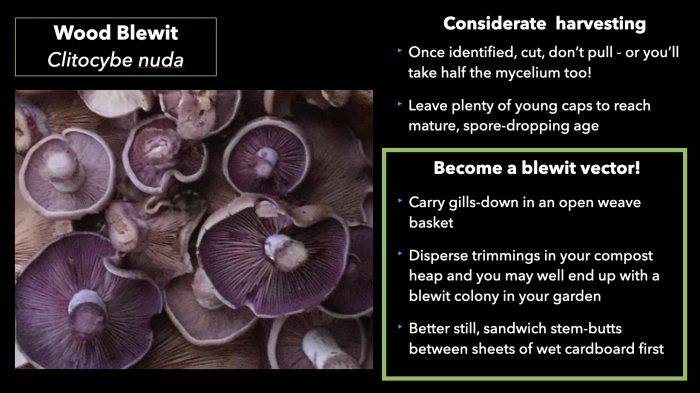
Wood blewits, and how to encourage them in your compost heap, are discussed in my webinar “20 Mushrooms to learn before you die”
Similar species:
- Field blewits (Lepista saeva) are similar, with a paler cap and gills, and growing on calcerous grassland. They are just as delicious as their woodland cousins, and can be used in similar ways.
- Sordid blewits (Lepista sordida) are quite similar to wood blewits, though generally frailer, and can be eaten in the same way.
- Purple webcaps (Cortinarius violaceus) and other more common purple stemmed webcap (cortinarius) species could be mistaken for blewits by the unobservant. While you would be wise to avoid eating any webcap without careful research, the purple varieties are not among its most worryingly toxic members, though they do all contain some potentially troublesome compounds. Distinguish webcaps by their lack of perfumed scent, and by carefully inspecting for thread-like remnants of their web-like ring on the gills. If in any doubt, do a spore print – all the blewits have creamy white to pale pink spores, while webcaps have rusty-brown spores.
- Clouded agaric (Clitocybe nebularis) are similar, though lacking the lilac colours
Wood blewits generally do not appear until there has been at least a light frost. This makes them doubly appealing as other top gourmet mushrooms can become scarce at this point in the season. And make no mistake – these are right up the top tier of the finest edible fungi.
Unlike many of the tastiest mushrooms which are myccorrhizal (growing in complex symbiosis with trees), blewits are saprophytes, living off dead matter and breaking it down. As long as there is leaf litter present, even broken down through the top soil layer, wood blewits can thrive. I normally find them on wood edges (some of my biggest harvests come from needle litter on the edge of conifer plantations), beneath hedgerows, in rotting piles of grass cuttings, and even quite regularly in grass some distance from the nearest trees. You will seldom come across a lone blewit and often find them in large clumps or loose rings sometimes several metres in diameter. This can make for very fruitful picking, though there may be some wastage as insects enjoy them as much as we do. Quickly splitting senior specimens down the middle will reveal any infestation.
Blewits have a slippery texture when cooked – but slippery in a delicious rather than slimy way. They have a floral bouquet – retained through cooking – which I think is unsurpassed in the fungal world (ceps and truffles excel in more earthy ways). That they appear as the game season kicks off is divine providence: a match made in heaven.
Stewed with pheasant, sauteed with seared venison liver, or pan fried with garlic to accompany roast fowl are my favourite late autumn treats. I traded some winter chanterelles with local gamekeeper for some teal and mallard and had about my finest fully-foraged meal of the year last week.
They pickle well, and the process of simmering in the pickling solution is adequate for rendering them digestible if you discard it after pickling and store the blewits under oil.
How to pickle wood blewits and other wild mushrooms
Related Pages:

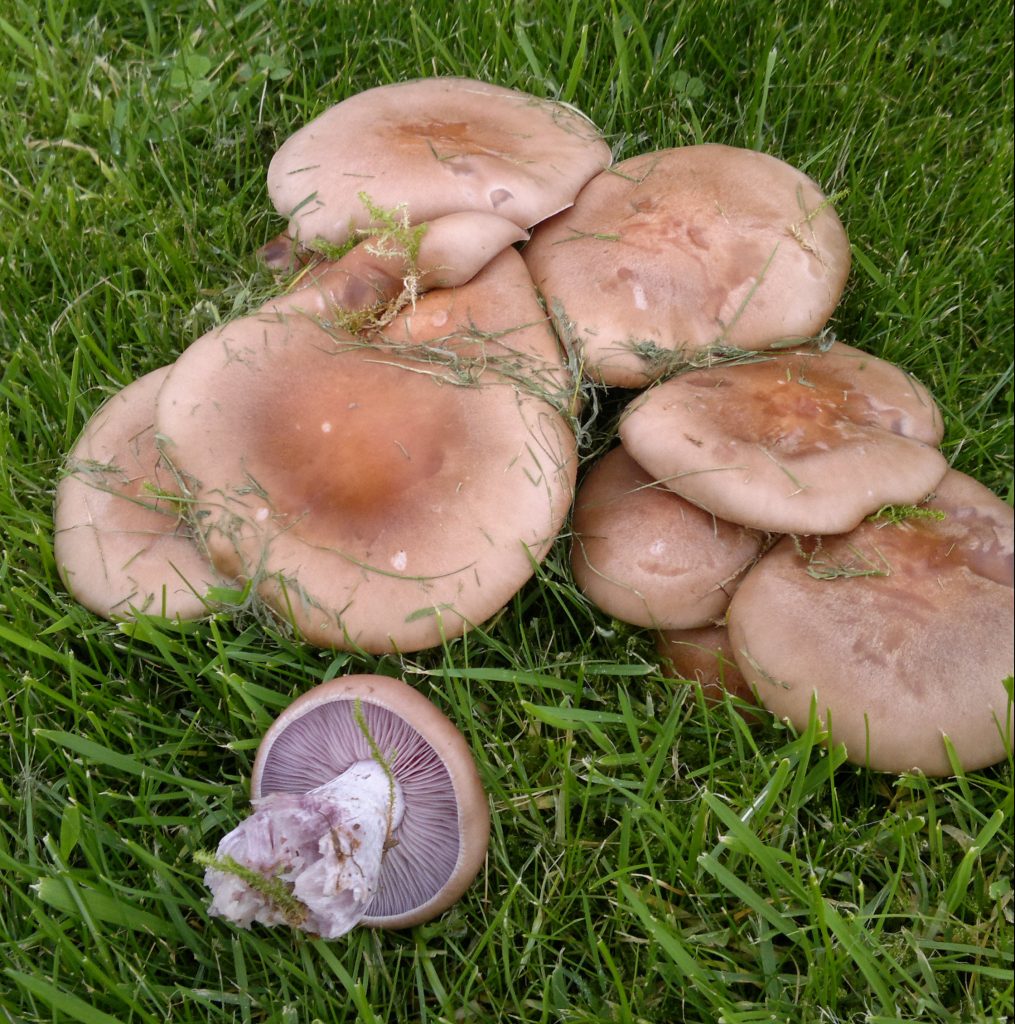
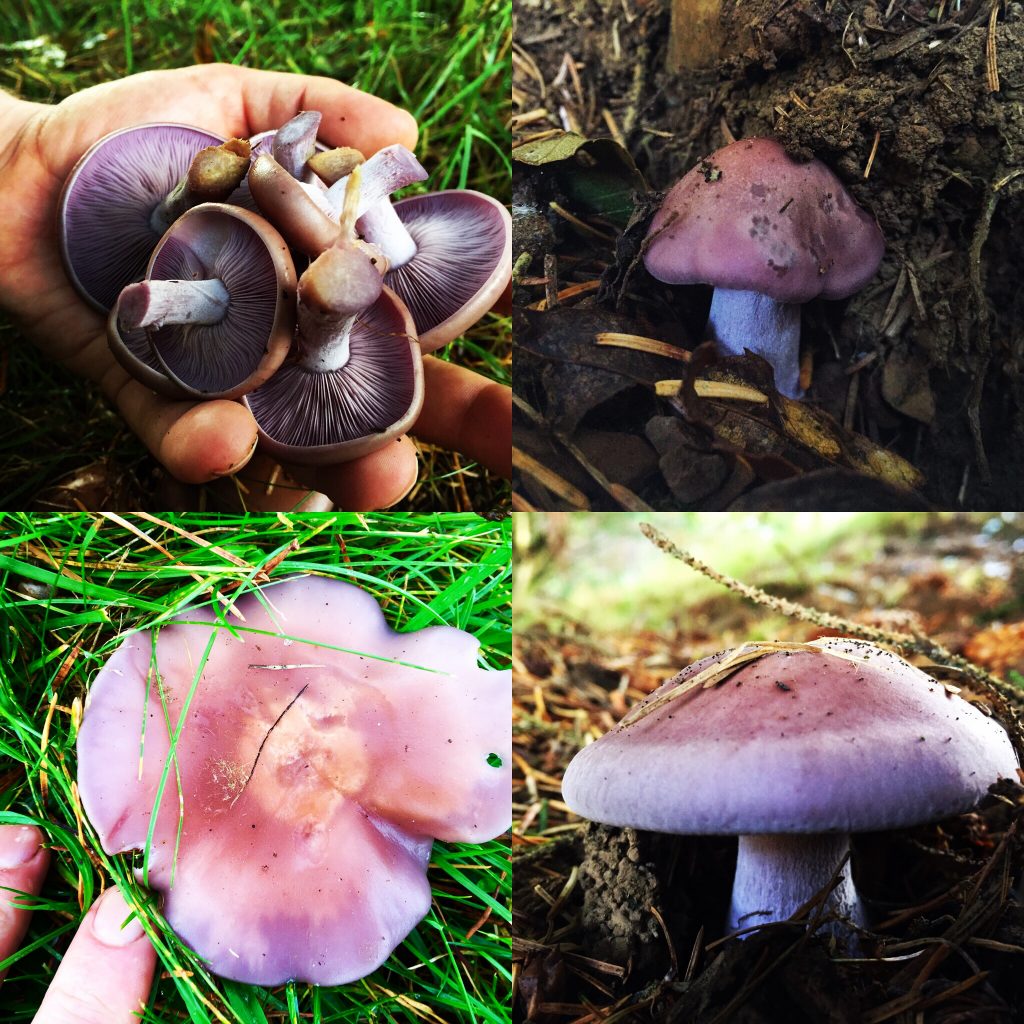
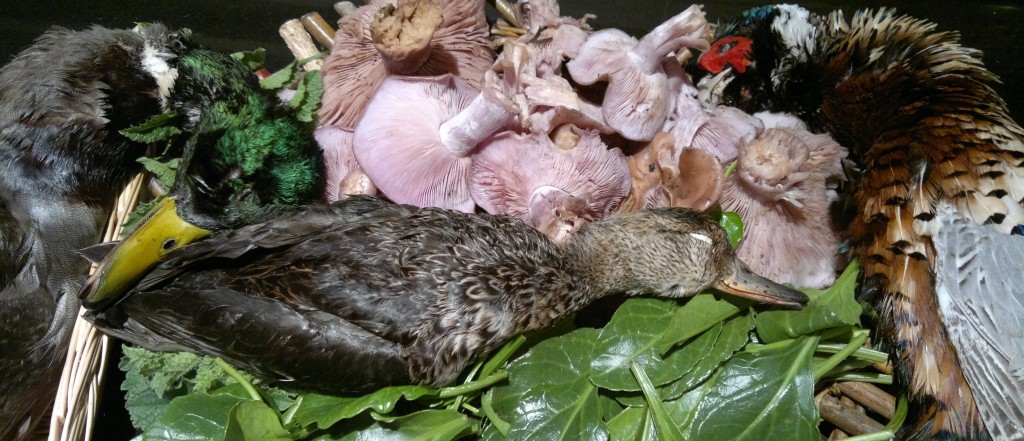
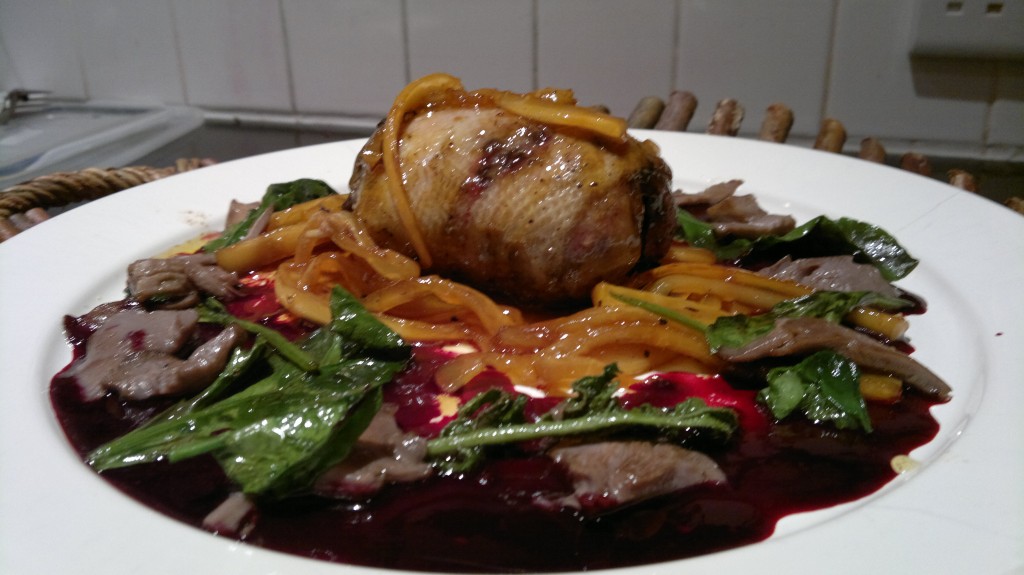
13 Comments
My dad used to pick field blew it’s about 30 years ago ,I think they sent them to make dyes.i was thinking about starting to pick them but don’t know where to sell them afterwards.would be greatful for any help. Tom hopper
Personally i’d just eat them myself – delicious. Not sure there’s a market in them for dyeing anymore.
Thanks for the reply
Are there any looky likies to watch out for Mark. I’ve some in amongst my elders, pretty sure but haven’t tried them yet. Smell of fresh orange juice.
Yes, I suppose you need to look out for livid pink gill. Not so similar really, but be aware.
And be careful of purplish varieties of cortinarius
Good point! …. Added to the text now. 🙂
I think I found some. The spore print was white/tan.
So cool sounds like you did
Tan might suggest a cortinarius. They have reddish / rust coloured spores while the lepista should be pink. I would be careful.
Thanks for the tip regarding serving them with game! This year the field blewits are very plentiful near me and I’ve managed to pick some bountiful harvests over the past weeks. My cupboards are already full of dried blewits and there’s only so many times one can have blewits on toast during any given season I’ve been on the prowl for new ideas. As luck would have it: I also found a new excellent t butchers stocking game meat. Ever so many thanks!
Another trial on the go is blewits pickled with Christmassy spices – fingers crossed the concoction uplifts rather than suppresses the flavour of the mushrooms. We shall see.
Iv been enjoying these for years as a boy when I was about to take my ferret out for a rabbit or two my father would say keep an eye out for blue stalks SA was the name given to them in the Yorkshire mining village
We called them blue stalks also in Thurnscoe S Yorks